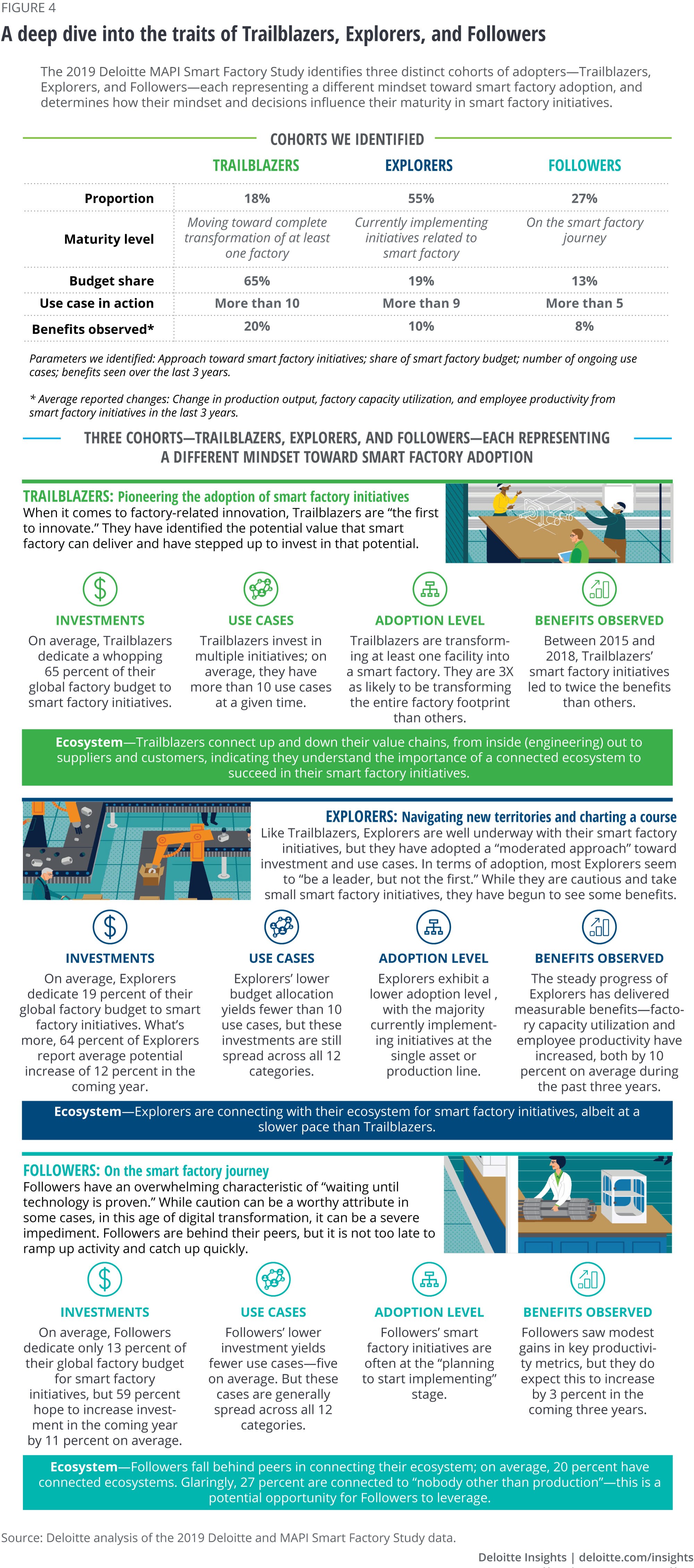Manufacturing goes digital: Smart factories have the potential to spark labor productivity
2019 Deloitte and MAPI Smart Factory Study
Paul Wellener
Steve Shepley
Ben Dollar
Stephen Laaper
Heather Ashton
David Beckoff
[ View interactive graphic fullscreen ]
Trailblazers lead the way
Another key finding of the study is that there are three distinct cohorts of adopters of smart factory initiatives. We call them Trailblazers, Explorers, and Followers (figure 4). Each cohort represents a different approach toward smart factory adoption. Where activity, maturity, and outcomes are concerned, Trailblazers are leading the way. In fact, this group has seen twice the level of gains to labor productivity compared with Explorers and Followers combined. Furthermore, Trailblazers expect increases in labor productivity to continue to accelerate ahead of the average over the next three years. Clearly, Trailblazers have determined the formula for extracting value through investments in smart factory initiatives.

Final thoughts
Whether manufacturers are just starting on their smart factory journey or well along the pathway like Trailblazers, there’s no doubt that smart factory initiatives could have a significant impact on manufacturing productivity. Naturally, there are caveats. There is also a need to launch these initiatives properly to set a team up for success. When and how smart factory use cases are launched can determine their success. In 2019 Deloitte and MAPI Smart Factory Study: Capturing value through the digital journey we offer a deeper dive into some of the best practices for adopting smart factory initiatives, further insights into how Trailblazers are pushing the envelope, and 10 common approaches to smart factory adoption that can be part of manufacturers’ “playbook” for getting started.
Read the full report, 2019 Deloitte and MAPI Smart Factory Study: Capturing value through the digital journey, for more.